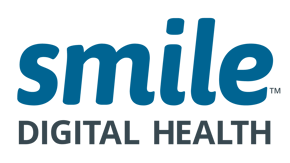Newly Available Features Requested by Smile’s Pioneering Clients
As the year 2023 comes to a close, Smile is back with a packed quarterly release—codename Zed—officially called the Smile Release 2023.11.R01. For those who may be unfamiliar, ‘Zed’ is how most Canadians pronounce the alphabet letter ‘Z’ and it’s a fitting name for our last named release of 2023.
All our quarterly releases include updates to the award-winning Smile product family and to the open standard HAPI FHIR® server, which we maintain. This blog highlights release features requested by some of Smile’s largest clients—payers, HIEs (health information exchanges), national health systems, and providers—as they pioneer data transformation in the health ecosystem. The needs of large-scale enterprises differ in big and small ways. As such, Smile provides its clients with unique scalable solutions that offer control, security and flexibility with their data architecture and IT solutions, at scale without vendor-lock in.
Flexible, Lower-Effort Integrated Data Processing at Scale
Our first feature highlight is an integration layer to Smile with Apache Camel. We often describe the Health Data Fabric (HDF) as lego blocks that fit together to build capabilities that allow for the creation of customized solutions to meet unique needs. One small limitation of this mechanism has historically been that these blocks (modules and features within the HDF) have a prescriptive way in which they fit and communicate with one another. As such, when the need to scale a feature arose, it historically required a technical integration effort.
With the new Camel integration framework, these blocks now have their own integration layer between them. This allows any block to connect, map and route to any other part of the system more quickly and easily, enabling new configurable solutions. You can now choose different capabilities based on your needs, then define, assemble, route those components, and compose a pathway that solves a unique problem, at scale. For example, our payer clients who need data processing tasks to run on a schedule and aggregate data, can now do so easily and at scale. But really, there is no limit to what you can do with this framework.
No Code Access and Authorization to MDM UI
Smile’s Master Data Management (MDM) User Interface (UI) capability now has two distinct access roles created: Data Stewards and Administrators.
The Data Steward role can perform day-to-day record reconciliation; such as the ability to accept or refute links to a golden record. The Administrator access is a distinctly separate role, which can do all the tasks of the Data Steward and additionally make changes to, govern and manage the MDM through the UI without any coding or technical knowledge. MDM governance activities include rule creation, tuning, testing, the ability to exclude data from searches (like dummy or test data) and match records, all through the UI. All actions completed in MDM UI are auditable and trackable.
Flexible Integration with Legacy Hospital Systems
Modern solutions that need to interoperate with legacy hospital systems will often need to use legacy data standards, like CDA and HL7® v2. Even if your organization is entirely FHIR-powered, an external database (like an imaging center or laboratory) may not be, as such a messaging operation like HL7 Outbound is required. Smile has long boasted flexible ingestion and conversion of data to and from non-FHIR formats.
This new HL7 outbound feature uses a flexible Java-based message conversion API. Organizations get enhanced flexibility to generate conversion messages with this new set of APIs. They can determine what content goes into them, and what steps in a workflow trigger the messages. The new scripting API can compose customized messages as well.
This powerful capability is unique to Smile and offers our clients complete flexibility to generate outbound HL7 feeds that contain all of the conversion messages and all of the data. This feature is part of the intelligence that enables Smile Health Data Fabric (HDF) to completely power a HIS (health information system), HIE, or EHR (electronic health record)—including, but not limited to database interoperability and exchange layer, storage engine, all business logic, legacy data integration and automation of the workflow engines.
Risk Mitigation for Internet Facing FHIR APIs
Our next highlight may seem small, but is a powerful watermarking security feature. This feature adds a watermark to every resource or record released to an organization's users (patients or members) through FHIR APIs. The watermark contains information that entails where the record came from, the server source of the resource, what user accessed it, and what client-facing application shared it. In the unfortunate event of a data breach, this identity watermark can help determine the details that led up to the breach and inform risk mitigation strategies quickly. We encourage all our clients to consider enabling this feature if they have APIs like the g(10) that face the patient or public.
Disabling Historical Records
This highlight was highly requested by many clients. By default, Smile Digital Health’s solutions maintain a complete version history of all resources (records) stored in the repository. This allows our clients to have a complete, longitudinal and comprehensive patient record. Certain organizations do not require this default feature for their data management needs and prefer that all version history doesn’t take up excess storage space. For these organizations, there is now an easily clickable toggle option that allows saving version history to be turned off, maintaining only the most recent data record.
Smile dQM Solution Available Now!
In case you missed the announcement, the Smile dQM solution is now available! This is the industry-leading solution for quality evaluation and reporting that leverages FHIR and CQL in order to streamline quality measures, identify care gaps, improve scores and intelligently enhance care quality across your organization. Get reproducible, low effort, quality results every time with Smile dQM!
Calling all HAPI FHIR Users
If you are considering the move from the free DIY HAPI FHIR implementation to Smile’s enterprise-level solution, our continuously refined and enhanced integration platform, capabilities, modules and features allow for even more robust and flexible implementations that can be configured for use multiple times. This frees up technical resources within your organization and enables them to solve your business problems, instead of building and maintaining IT infrastructure.
True and intelligent interoperability is available today for a better global health future.
Contact us for details.


